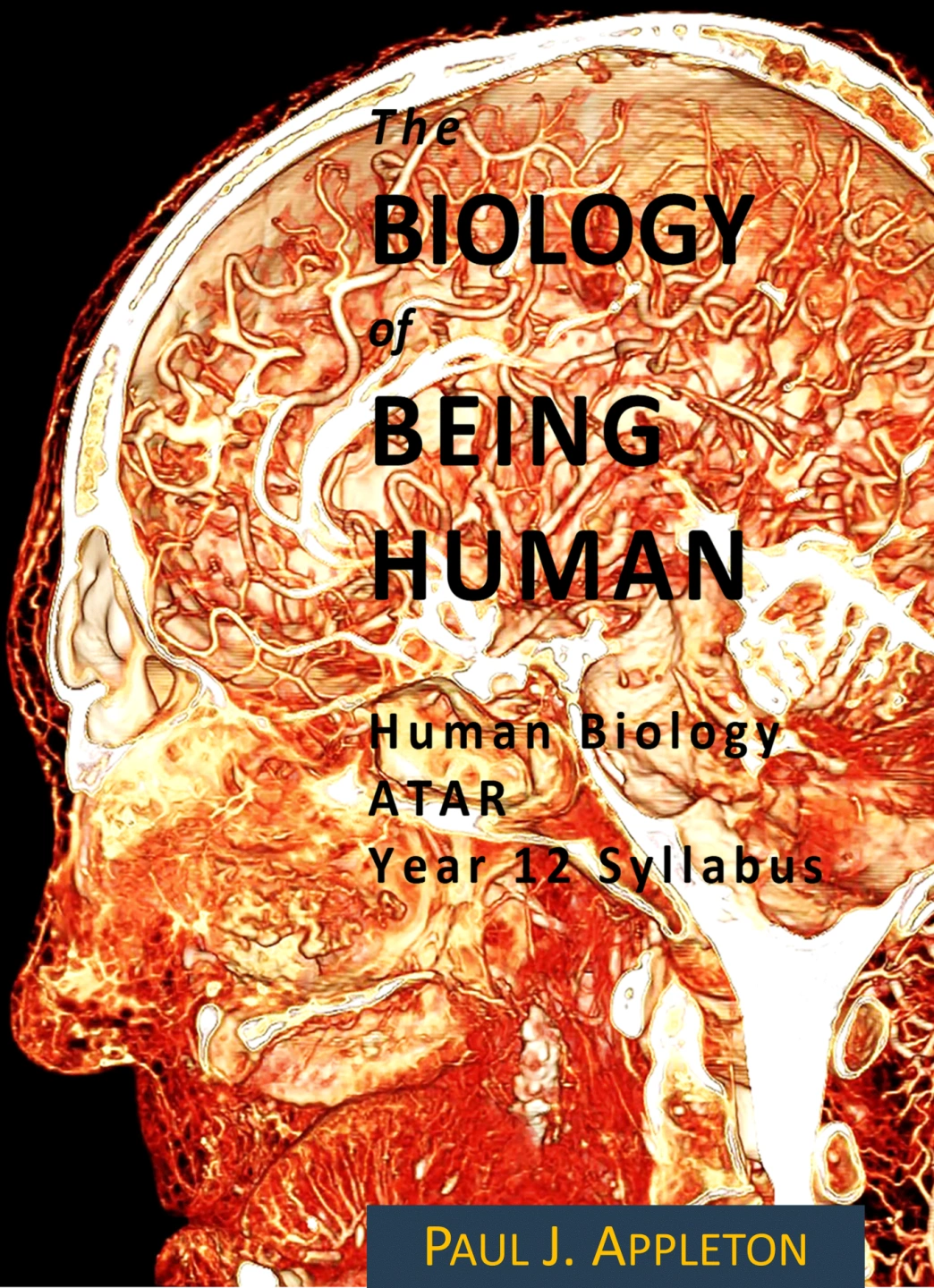THE TALL POPPY PUBLISHING GROUP
SECONDARY SCHOOL TEXTBOOK PUBLISHER
The BIOLOGY of BEING HUMAN

DESCRIPTION
The BIOLOGY of BEING HUMAN has been written by Paul Appleton for students studying Units 3 and 4 of the Human Biology Australian Tertiary Admission Rank Year 12 syllabus as published by the Western Australia School Curriculum and Standards Authority. A catalogue record for the book is available from the National Library of Australia (ISBN 978-1-7638081-0-2).
SUMMARY
The title of each chapter is based on the topics in the syllabus viz:
Maintaining Life
The Endocrine System
The Nervous System
Nerve Impulses
Maintenance of the Body
Infectious Diseases
Response to Infection
Mutations
Gene Pools and Evolution
Evidence for Evolution I
Evidence for Evolution II
Primates
Evolutionary Pathways
Tool Cultures
KEY FEATURES
Each of the colour-themed chapters comprises content that integrates the three strands of Science Inquiry Skills, Science as a Human Endeavour and Science Understanding and features that teachers and students value viz:
Using the colour theme, a detailed Scope and Sequence section provides an overview of the science strand descriptions and the chapter(s) to which each is applicable.
A Syllabus link outline at the beginning of each chapter.
Structured content that highlights the development of science as a unique way of knowing and doing that explores the wide range of social, economic, ethical and cultural factors that shape the influence and use of science in society; and that develops a student’s understanding of the key concepts, models and theories that underpin the subject; and of the strengths and limitations of different models and theories for explaining and predicting complex phenomena.
A Closer Look that explores in greater depth a topic relevant to the theme of the chapter.
A Crossword that tests a student’s understanding of the key concepts and terms.
Activities that require a student to extract information and reorganise data in the form of tables, graphs, flow charts, diagrams, text, keys, spreadsheets and databases to evaluate claims, investigate ideas, solve problems, reason, draw valid conclusions and develop evidence-based arguments. Most of these Activities are based on published peer-reviewed scientific research and real-life scenarios.
High resolution photographs and electron micrograph images are complemented by clearly labelled diagrams and tables that are designed to walk a student through complex processes that are difficult to teach and visualise, that encourage scientific thinking, investigation and problem solving.
A comprehensive Glossary, Index and Appendices for the solutions to the Crosswords and Activities.
A section on Examination Technique that details the common principles that a student should address to maximise examination marks in the Year 12 Human Biology ATAR Examination. This section incorporates the recommendations of numerous ATAR course examination reports for Human Biology published by the School Curriculum and Standards Authority. Included in this section are annotated diagrams that show a student how to answer Section Two and Section Three questions, providing the student with the tools required to break down a question, identify the question components and effectively answer the in-depth analysis questions. This is particularly pertinent for Unit 4 topics where there is a general trend that students lack an in-depth understanding of the concepts.

